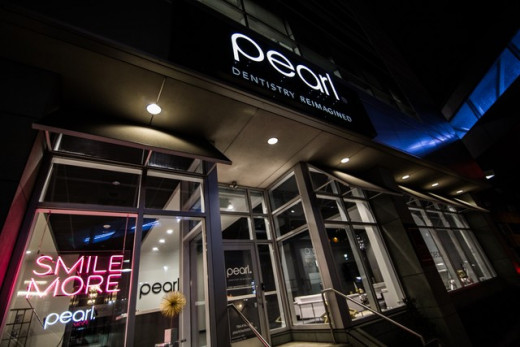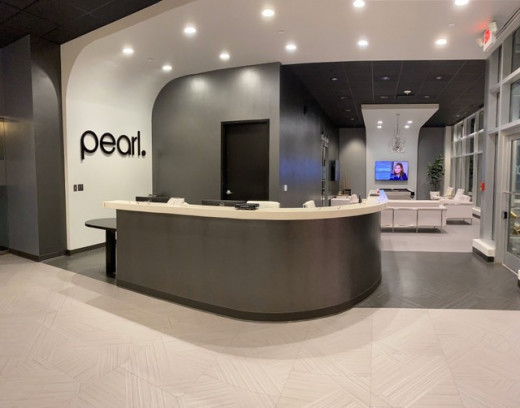Cosmetic dentistry is professional oral care that seeks to improve how your smile, mouth, and teeth appear. Despite the fact that cosmetic dentistry procedures are mostly considered elective, some of the treatments have restorative benefits. Some of the cosmetic procedures are rather simple while others are complex, and therefore require specialized attention. Here are a few of the cosmetic dentistry procedures that you can expect when visiting Pearl Dentistry in Uptown Charlotte.
1. Composite Bonding
Composite bonding is a minimally invasive, inexpensive, and fast way of getting a brighter smile. Composite bonding is a procedure whereby a dental material called composite resin is molded to give teeth a straighter appearance and a whiter smile. It could be used for cosmetic purposes for patients with gapped, chipped, and discolored teeth. Composite bonding usually only takes one appointment to complete. Though most dental insurance firms will not cover cosmetic bonding, you should ask if they can cover a small percentage.
Not everyone’s teeth can take composite bonding. In cases with a crooked smile, for example, as a result of under or overbite, this process will not serve to correct it. You should always consult with your dentist to discuss the remedy for adjusting the bite or complex gaps and chips in teeth. Bonding is meant for individuals who want a cosmetic solution for their teeth.
Today the process is very efficient and easy for both the patient and the dentist. The treatment involves the removal of surface enamel to allow the dentist to correctly shape the composite bonding on your tooth. The dentist then adds a bonding agent and applies a composite resin, then cures it using a special light to give it a smooth feel. Given normal care, composite material does not need regular attention since it is a durable material. You should avoid biting hard foods to prevent them from cracking.
2. Teeth Whitening
Teeth bleaching and teeth whitening are among the basic cosmetic procedures today. Charlotte’s Pearl cosmetic dentists do teeth whitening after debris, tartar, and plague have been cleaned from the tooth surface in order to restore their natural appearance. Different people have different levels of stained teeth. Some teeth may be naturally yellow while others may start to turn yellow as they age. For more information, read our blog of recommendations for teeth whitening from your cosmetic dentist and tips for improving your teeth whitening at home.
Some common causes of tooth discoloration could include:
• Natural aging process
• Drinking tea, red wine, coffee, colas, using tobacco or eating pigmented foods like blueberries
• Accumulation of tartar and plague
• Using a lot of fluoride during teeth formation
• Early childhood treatment with the antibiotic tetracycline
• Teeth trauma that could turn teeth black, brown or grey
Reasons for cosmetic teeth whitening include:
• Boosting your self-esteem and confidence by improving your smile
• Giving yourself a younger appearance
• Special occasions such as job interviews, weddings, or class reunions
• To give a positive first impression
3. Dental Implants
Dental implants are meant to replace teeth after they are lost. A small titanium screw is inserted into the region of a missing tooth in the jawbone to support the crown. The implants resemble natural teeth. The implant is permanently placed after the surrounding bone, the implant and the bone have been fused.
To get a successful cosmetic implant, you should choose an experienced dentist. If you do not have enough bone, bone grafting could be done in order to support the implant. It is recommended that you also inform your dentist about your medical history because some conditions such as liver disease, brittle diabetes or bleeding disorders could affect placing the implant.
It is important to floss and brush your teeth on a daily basis and avoid smoking after your cosmetic implant because it weakens the bone structure. You should also avoid ice and hard foods because they can damage the crown. Visiting a dentist at least twice a year will also contribute to the success of the implant and your overall oral health.
4. Dental Inlays and Onlays
These are indirect fillings that are used for teeth with moderate and mild decay or teeth that have less space to support the tooth filling. They do not damage the tooth cusps since they are placed directly on the surface of the teeth. When most of the tooth’s surface is damaged, the on-lays are used to cover the entire tooth surface.
The inlays and the on-lays are usually made from a composite resin and adhesive dental cement is used to attach them to the teeth. The inlays and on-lays restore the tooth’s shape, strengthen, and provide support to the teeth, and prevent further deterioration and decay of the teeth.
5. Dental Veneers
Cosmetic dentists use porcelain veneers to resolve most cosmetic issues such as repairing damaged or cracked teeth, repairing crooked teeth, and rectifying the gaps between teeth. For more information on dental veneers, read our blogs about the advantages of veneers and the minimally invasive process of getting veneers and when to replace veneers.




